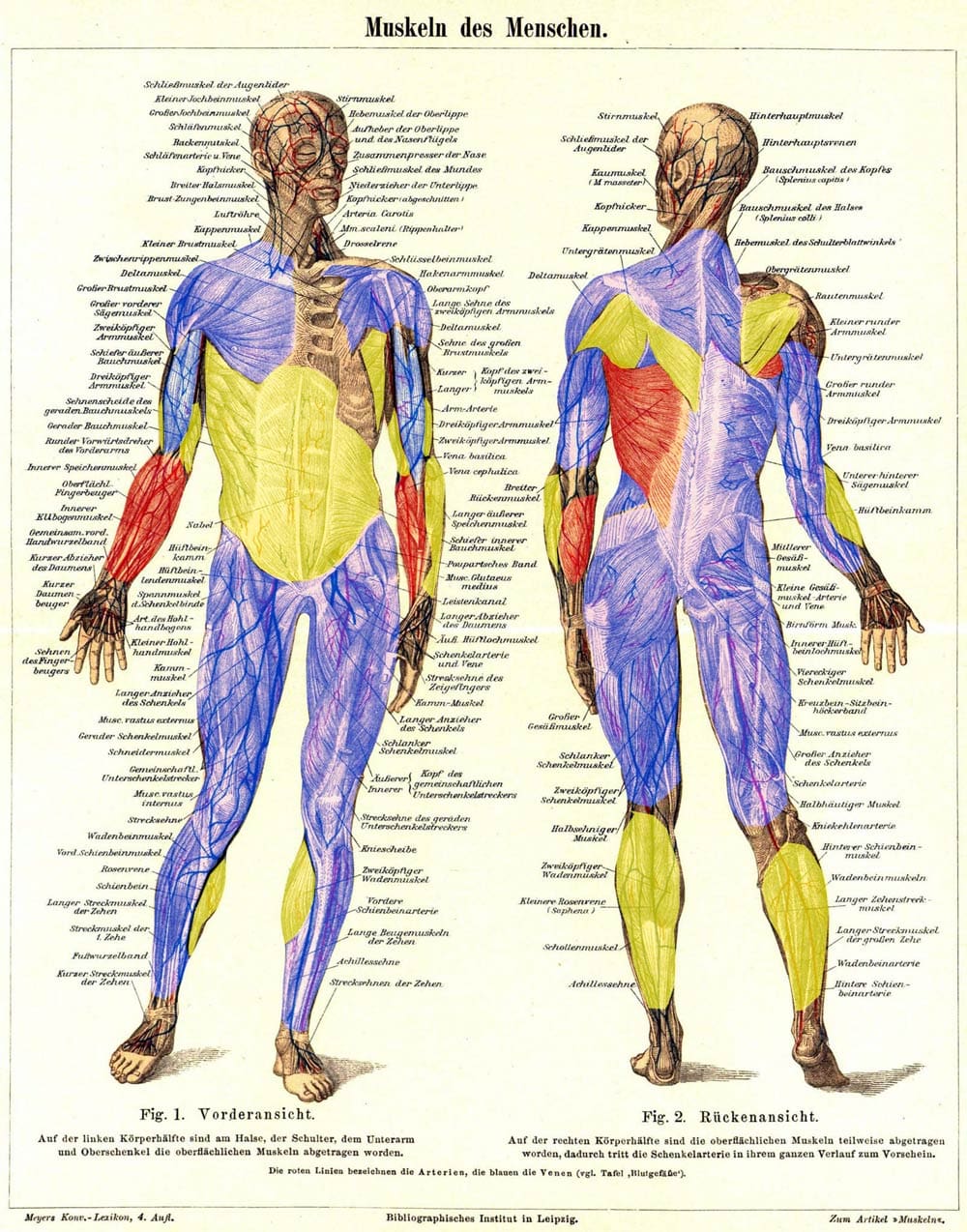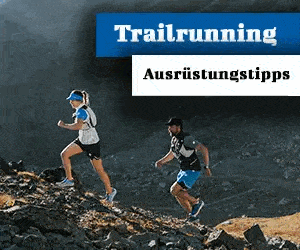Which muscles are stressed during climbing, is the least known. The corresponding knowledge for a targeted training as well as for the prevention of injury is however essential. Because in addition to the strength of the muscles relevant for climbing strengthening the so-called antagonists (opponent) is almost as important. Christoph Völker of target10 shows you which muscles are stressed during climbing.
A contribution by Christoph Völker from target10a.com
Almost all of the body's skeletal muscles are used when climbing - but enormous ones Differences in intensity. In the following figure, muscles are highlighted, which experience a high to extreme load by climbing.

The muscles marked in the figure are divided into three categories in the following description.
1. Primary musculature
If you want to improve the key factor of climbing, you have to start with the primary musculature.

Finger flexor muscles of the forearm
A "strong enough" does not exist in the finger flexor muscles! These most important muscles do not do much in terms of mass. But a constant development of maximum power should be sought by every ambitious climber. Fear of a counterproductive weight gain by muscle gain you do not need to have compared to other muscle groups.
But with the power in these muscles alone, you can not hold on to any grip for a long time. In addition to the foot technique and body weight, the biomechanics of the fingers also plays a major role. Therefore, one should not be surprised if equally good climbers can hold some handles differently good.
- Long Thumbbender (Flexor pollicis longus)
- Deep finger flexor (Flexor digitorum profundus)
- Superficial finger flexor (Flexor digitorum superficialis muscle)
- etc.
Typical training exercise: hanging on the fingerboard
Use when climbing: hold all handles (even cracks but no coat handles)
Latissimus and the large round muscle
The latissimus and the large round muscle are the main workers for all movements similar to a chin-up. So pulling up the body with the arms. The large round muscle is especially stressed at the beginning of the movement, with arms still almost stretched. The latissimus is also a very large muscle. Even if a well-developed, strong latissimus is necessary for climbing, you do not need to train it up to the absolute maximum in contrast to the finger flexors.
- Latissimus (Latissimus dorsi muscle)
- Large round muscle (Musculus teres major)
Typical training exercise: pull-up
Use when climbing: Whenever the arms stretched upwards are pulled towards the body
2. Secondary musculature
The second category is the secondary musculature, which is often called the synergic stabilizing muscle group. This muscle group includes the following areas.

Biceps Curl
The elbow flexors are similar to the latissimus used for all Klimmbewegungen when climbing. However, these perform less work compared to the latissimus. The outward-turned hands when climbing, the biceps fewer claimed as the brachialis and brachioradialis. The brachialis is located under the biceps and, with little body fat provided, is only slightly visible on the upper arm side between biceps and triceps.
- Elbow flexor - biceps (Biceps brachii)
- Brachialis (Brachialis)
- Brachioradialis (Musculus brachioradialis)
Typical training exercise: pull-up
Use when climbing: Whenever the arms stretched upwards are pulled towards the body
Muscles of the back shoulder, rotator cuff and back
These muscles, too, are very important for all pull-up movements as assistants of the latissimus. They help to stabilize the scapula and pull the upper arm down to the body. Interesting at this point is the sub-scapular muscle. As the strongest internal rotator of the shoulder joint, this could also contribute greatly to the so-called climbing lunge.
The trapezius is a relatively large muscle and functionally divided into three distinct parts (above, middle, below). For Klimmbewegungen only the lower part of the trapezius is stressed significantly.
- Rear deltoid (Deltoid muscle)
- Lower bones muscle (Musculus infraspinatus)
- Small round muscle (Musculus teres minor)
- Lower shoulder blade muscle (Subscapularis muscle)
- Trapezius muscle (Trapezius muscle)
Typical training exercise: pull-up
Use when climbing: Whenever the arms stretched upwards are pulled towards the body
All abdominal muscles
The abdominal muscles are essential for the much cited body tension when climbing. The steeper the terrain, the more important the body tension becomes.
- Straight abdominal muscle (Musculus rectus abdominis)
- Outer oblique abdominal muscle (Obligus externus abdominis)
- Inner oblique abdominal muscle (Musculus obliquus internus abdominis)
- Transverse abdominal muscle (Musculus transversus abdominis)
- Anterior sawtooth muscle (Musculus serratus anterior)
Typical training exercise: Hangwaage (How you do the Training slope scale, we show you here)
Use when climbing: pedaling in steep terrain (body tension)
calf muscles
The calf muscles are certainly not a force-specific bottleneck in terms of climbing performance. Nevertheless, the calf muscles are trained relatively well when standing on their toes. When climbing in vertical, long routes even more than bouldering. They are an exception to the lower limb. Active calves need not be trained to climb better.
The "two-headed calf muscle" and the soleus muscle are in the anatomical sense flexor muscles, which means the bending of the foot down. For anatomical-systematic reasons, what every human being would call stretching according to intuition is called flexion (plantarflexion).
- Two-headed calf muscle (Gastrocnemius muscle)
- Plaice muscle (Soleus muscle)
- Rear tibia muscle (Tibialis posterior muscle)
- Long toe flexor (Flexor hallucis longus muscle)
- Long toe flexor (Flexor digitorum longus)
3. Chest and rhombus muscles
For the following muscles there is disagreement about how strong the use of climbing. In my opinion, these muscles are likely to be underperforming in climbing. They are therefore potential candidates for compensation training.
chest muscles
The abdominal fibers of the pectorialis major are used to assist in pull-ups, especially antagonistic. The chest muscles, however, are mainly responsible for pushing movements of the arms and is rather underdeveloped in climbers.
- Anterior pectoralis muscle (Pectoralis major muscle)
rhomboids
In my analysis, the rhomboid muscles are also antagonistic to pull-up movements. They are significantly burdened with rowing movements, which are more likely to be pulled from the bottom up. But also when deadlifting.
- Large rhombic muscle (Rhomboid muscle major)
- Small rhomboid muscle (Rhomboid muscle minor)
Examples of rarely used muscles
Occasionally, when climbing, other muscles are stressed a bit more. However, these climbing situations are too rare to sustainably strengthen the corresponding muscle.
Hüftbeuger: Is probably more stressed when putting on the climbing shoes than climbing itself. Exception: Very high start and occur in very steep terrain.
Beinbizeps (thigh flexor): Helps with hooking. But there will be a consensus that it makes no sense to exercise the Beinbizeps specifically, just to be able to hook better when climbing.
Quadriceps and Gluteus Maximus: For example, if you have to use one leg to kick on vertical terrain until your leg is completely bent. If you have to get up then you need quadriceps and gluteus maximus.
The strongest muscle ever: the brain
Wolfgang Güllich rightly described the brain as the strongest muscle for climbing.

You can find articles for your personal training www.target10a.com.
Credits: picture and text Christoph Völker - target10a.com, Cover Picture Rockvision


